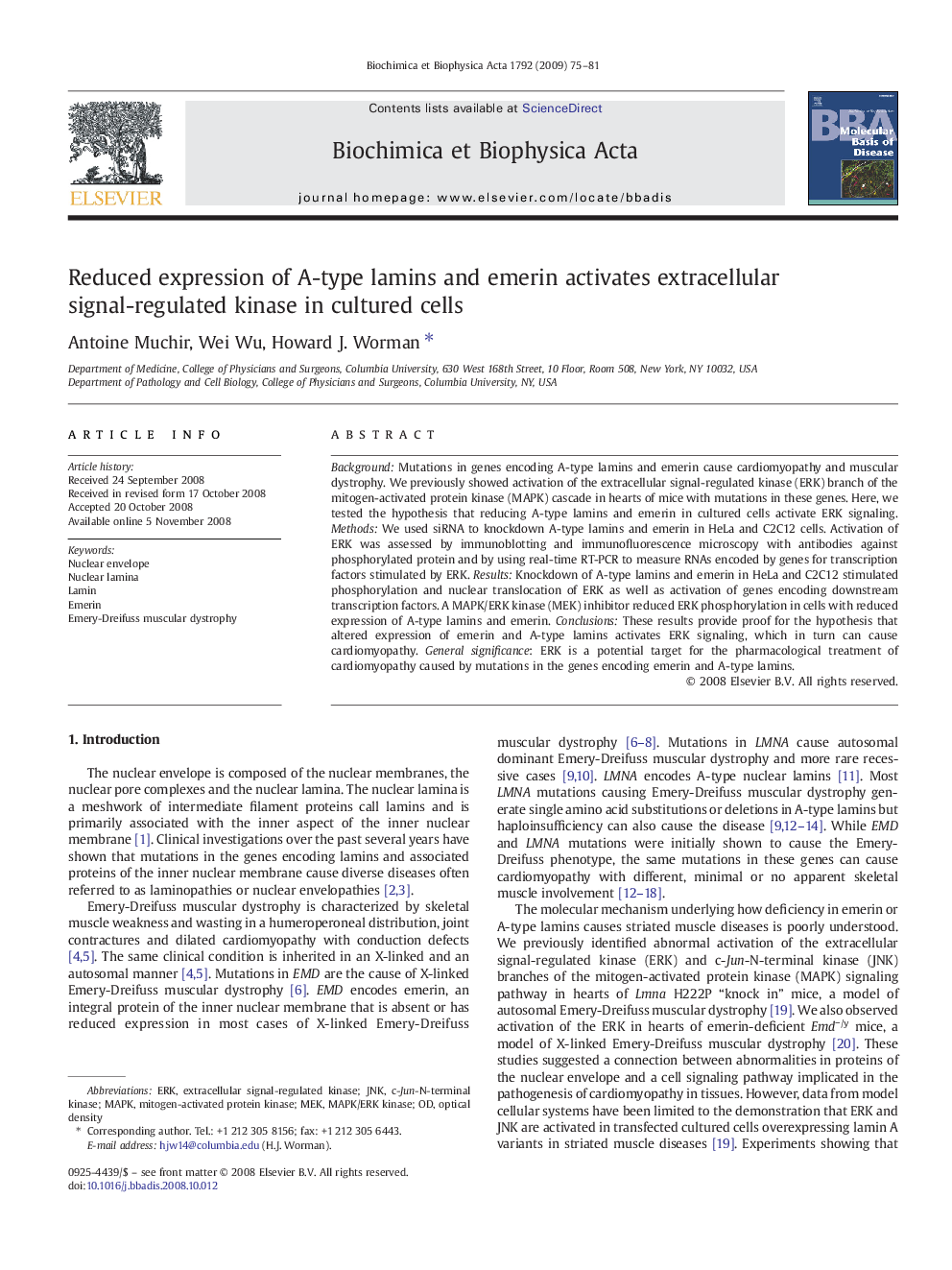| Article ID | Journal | Published Year | Pages | File Type |
|---|---|---|---|---|
| 1905593 | Biochimica et Biophysica Acta (BBA) - Molecular Basis of Disease | 2009 | 7 Pages |
Background: Mutations in genes encoding A-type lamins and emerin cause cardiomyopathy and muscular dystrophy. We previously showed activation of the extracellular signal-regulated kinase (ERK) branch of the mitogen-activated protein kinase (MAPK) cascade in hearts of mice with mutations in these genes. Here, we tested the hypothesis that reducing A-type lamins and emerin in cultured cells activate ERK signaling. Methods: We used siRNA to knockdown A-type lamins and emerin in HeLa and C2C12 cells. Activation of ERK was assessed by immunoblotting and immunofluorescence microscopy with antibodies against phosphorylated protein and by using real-time RT-PCR to measure RNAs encoded by genes for transcription factors stimulated by ERK. Results: Knockdown of A-type lamins and emerin in HeLa and C2C12 stimulated phosphorylation and nuclear translocation of ERK as well as activation of genes encoding downstream transcription factors. A MAPK/ERK kinase (MEK) inhibitor reduced ERK phosphorylation in cells with reduced expression of A-type lamins and emerin. Conclusions: These results provide proof for the hypothesis that altered expression of emerin and A-type lamins activates ERK signaling, which in turn can cause cardiomyopathy. General significance: ERK is a potential target for the pharmacological treatment of cardiomyopathy caused by mutations in the genes encoding emerin and A-type lamins.
